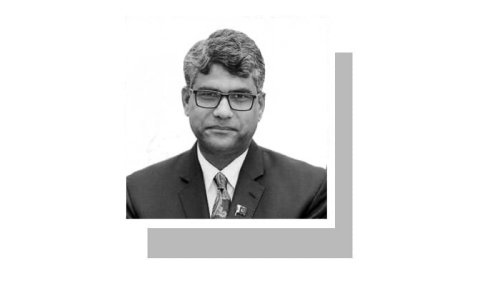
NEW DELHI: I live on the 15th floor of a 20-storey building. I bought the apartment 10 years ago because the view from the balcony was priceless. Unfortunately, these days the view is not what it used to be: a stubborn haze-curtain hangs listlessly on that precious panorama on most days, especially during the winter months.
But it is not the dull view from the balcony that bothers me so much. Like many others in this sprawling capital city of India, I am far, far more worried about the air we breathe. Last year, the World Health Organisation named Delhi the world’s most polluted city in a study of 1,600 cities. The average particulate matter (PM2.5) level for New Delhi is higher than 297, which is 15 times higher than the WHO standard of 20. Children and senior citizens are the worst sufferers.
In the early 2000s, Delhi’s air had actually become clean after the introduction of CNG in public transport. But over the years, NOx, ozone and PM2.5 levels have been rising in proportion to an increase in the number of vehicles, especially diesel vehicles, in the city. There are 1.9 million private cars and 4m motorcycles and scooters registered in Delhi.
But vehicular pollution is not the only culprit destroying the city’s air quality. The construction boom, road dust, the city’s geography, growth, poor energy sources, burning of garbage, polluting industries and unfavourable weather conditions are equally responsible for the mess.
On Jan 1, the city government started a bold experiment to tackle vehicular pollution: the odd-even scheme. This means private cars are allowed to operate only on alternate days from Jan 1 to 15, depending on whether their licence plates end in an even or an odd number. Women drivers, VIPs and commercial vehicles are exempt from the rule.
When the system was announced by Delhi Chief Minister Arvind Kejriwal, who had to leave the city for 10 days in March last year to cure a chronic cough, many were sceptical. They were not sceptical about the formula per se but about the level of compliance.
“Delhi’s psyche is different … it is not Chennai or Mumbai … and there are too many people who get away by flaunting their powerful connections … implementing this [the odd-even formula] would be a Herculean task,” Arvind Kumar, a professor, told me, when the scheme was announced. Seven days later, Kumar says he is surprised by Delhi’s “even attitude and the compliance level”. It has surprised me also.
On Jan 4, the first Monday after the year-end break which many expected to be a “manic Monday”, I was at Rajiv Chowk, a very busy metro station, to check out how things were going.
On platform 3, I spotted Ashok Sharma, a well-dressed man in his mid-50s. He seemed to be surveying the situation intently, as a newcomer would do. My guess turned out to be correct: Mr Sharma was new to the metro system. “Yes, it is difficult since I am used to the car travel. But if the government is doing something positive, I think we should support it,” he said forcefully. “In any case, the Delhi Metro has pushed extra trains into service and so it’s not that difficult.”
Over the last few days, many people have echoed Mr Sharma’s view. “I am getting used to the pleasures of restraint: traffic-free roads. Driving is a pleasure again. Once Delhi gets addicted to easy traffic and a dip in pollution, this will become a way of life,” Ranjoy Sen, who works for an advertising firm in Delhi, told me. “I hope the government continues beyond the cut-off date.”
On Thursday, the government claimed that the peak volume of traffic has come down 40pc and pollution level is also down. This, however, has been severely contested by experts. Last week, a photo of an overcrowded Rajiv Chowk metro station was circulated on the web. But soon it was found out that it was an old photo.
Interestingly, people are demanding better car-pooling services, more public transport, lower cab fares and better last-mile connectivity. But very few are calling for dismantling of the experiment.
The other ‘side effect’ of the scheme is that it is breaking many social barriers; but is also threatening to raise new ones.
“I was on a bus the other day and a man got in. I could sense that he never travels on public transport. A few stops later, he got a seat next to a bus regular. Initially, the man was hesitant to sit but eventually he did and in no time started a conversation with his co-passenger … the invisible barriers were down,” a friend posted on Facebook.
On Wednesday, the Delhi High Court asked the government to consider starting a premium coach service for the rich as an incentive to use public transport. But, E. Sreedharan, the man credited for giving the city the fantastic metro service, spoke out against the idea, saying that no public transport should give any “privileged treatment to any particular class of passenger”.
It’s been over a week since the start of the plan and I would say Delhi has shown that it actually has a can-do spirit.
Will the odd-even rule have a long-term effect on Delhi’s air? Unlikely, because there are many other things that need to change for making the city’s air clean.
Nevertheless, it is a positive start.
Twitter: @kumkumdasgupta
Published in Dawn, January 12th, 2016












































